Beautiful tourist destinations being ruined by rubbish
Rubbish tarnishing tourist hotspots
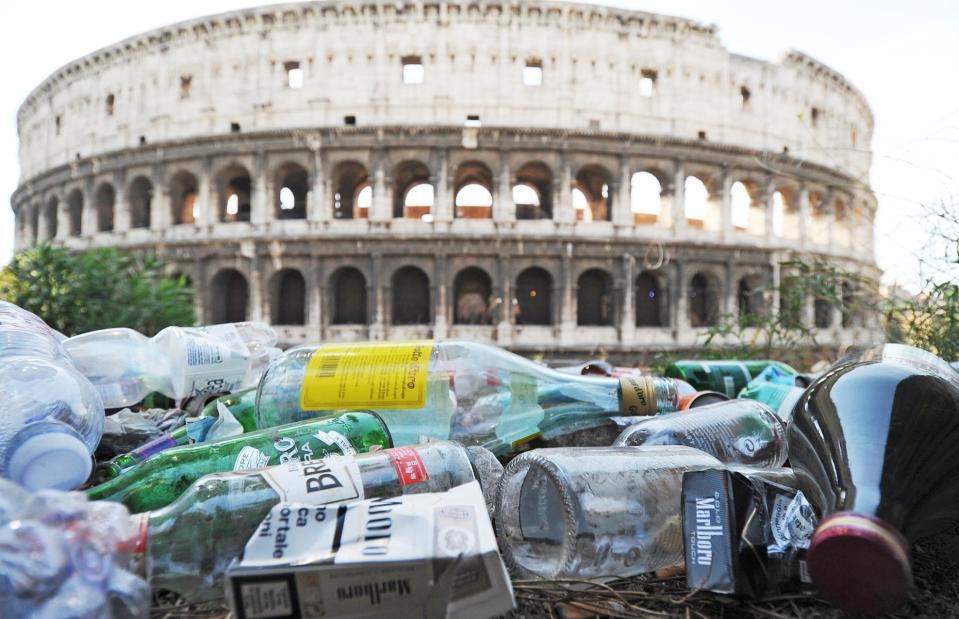
MZeta/Shutterstock
From filthy beaches and stinking cities to plastic-choked waterways, litter is threatening some of Earth’s most beautiful destinations and last remaining wildernesses. We take a look at holiday hotspots overwhelmed with rubbish as a result of overpopulation, mass tourism and poor environmental practices.
Mount Everest, Nepal
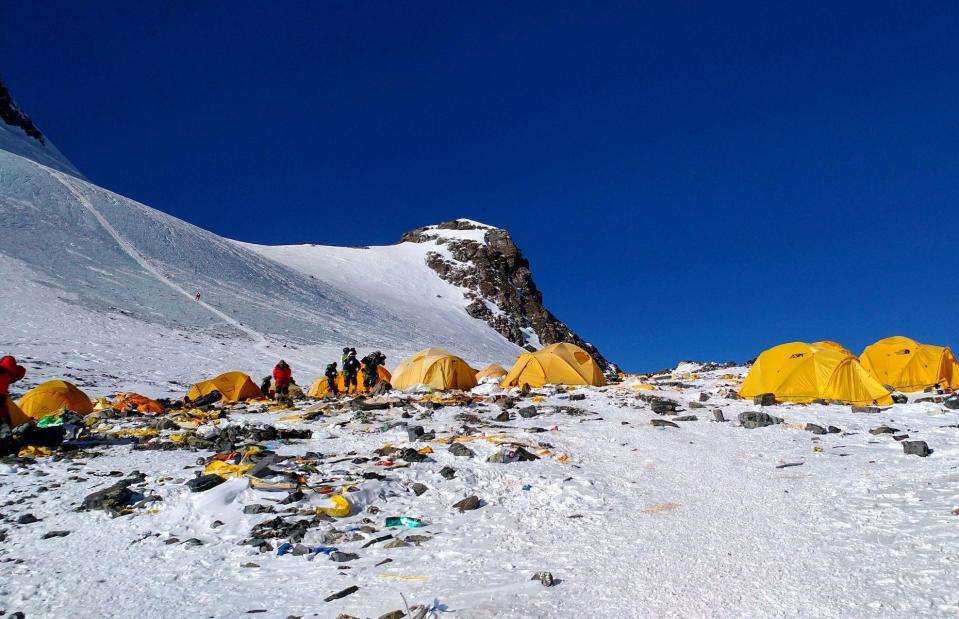
DOMA SHERPA/AFP/Getty Images
Discarded camping gear, used oxygen tanks, ropes, food packaging and human waste reveal the ugly face of adventure tourism on Mount Everest. This 2018 image was taken on Camp 4 which, at 26,240 feet (7,998m), is the world’s highest campsite and where the main problem is tents and gear abandoned to the elements. As summiting Everest becomes increasingly commercial, it's been reported that cheaper expedition operators are cutting costs by reducing waste removal.
Mount Everest, Nepal
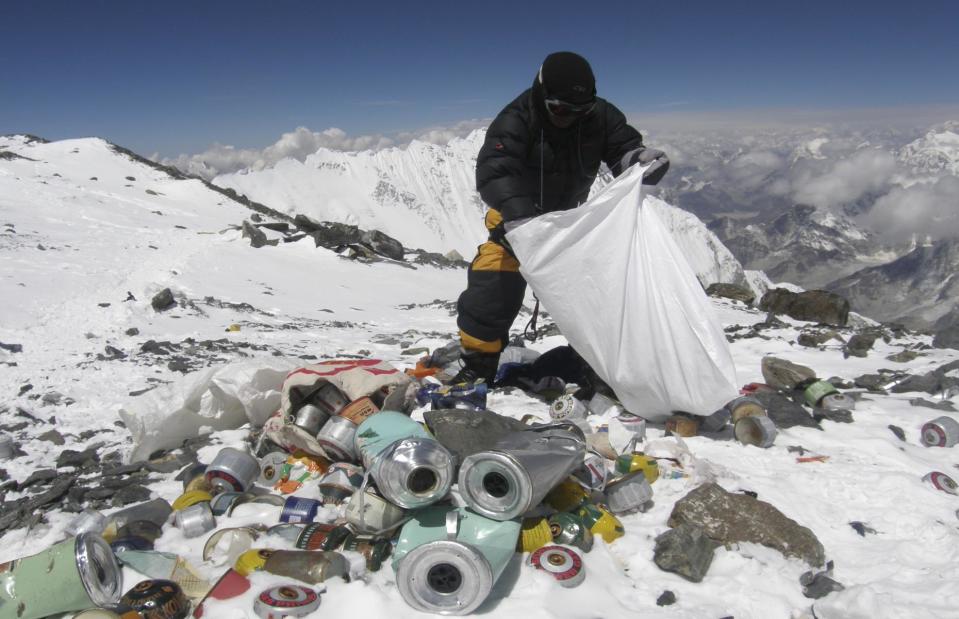
DOMA SHERPA/AFP/Getty Images
Hampered by exhaustion, altitude and the dangerous terrain, carrying bulky items back down can be a step too far for some climbers. Instead, abandoned gear and litter is often left in camps to be strewn around by high winds. As well as creating environmental concerns, it can become a hazard for other climbers – although some people argue the frozen tents are impossible to remove.
Mount Everest, Nepal
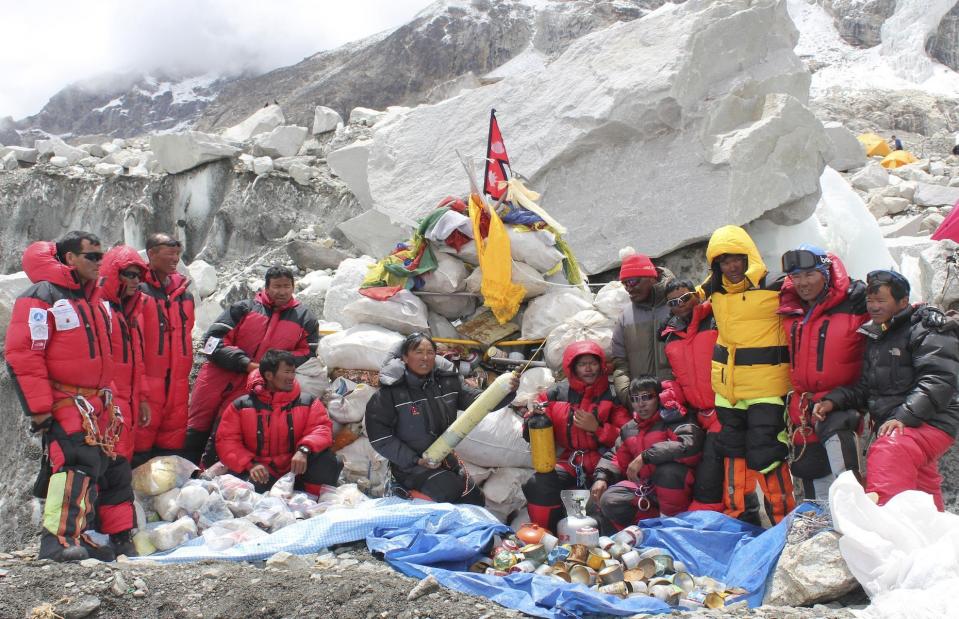
NAMGYAL SHERPA/AFP/Getty Images
Many Sherpas have risked their lives to retrieve garbage left behind by climbers on the mountain. In recent years the Nepalese government, expedition organisers and charities have organised official clean-up operations at the start of the season to remove rubbish from the increasingly busy trail up to base camp and beyond. Despite these efforts, it's hard to keep up with the 600-plus people who attempt to summit every year. It is unknown for certain how much garbage has accumulated on Everest, but it is believed to be several tonnes.
Bali, Indonesia
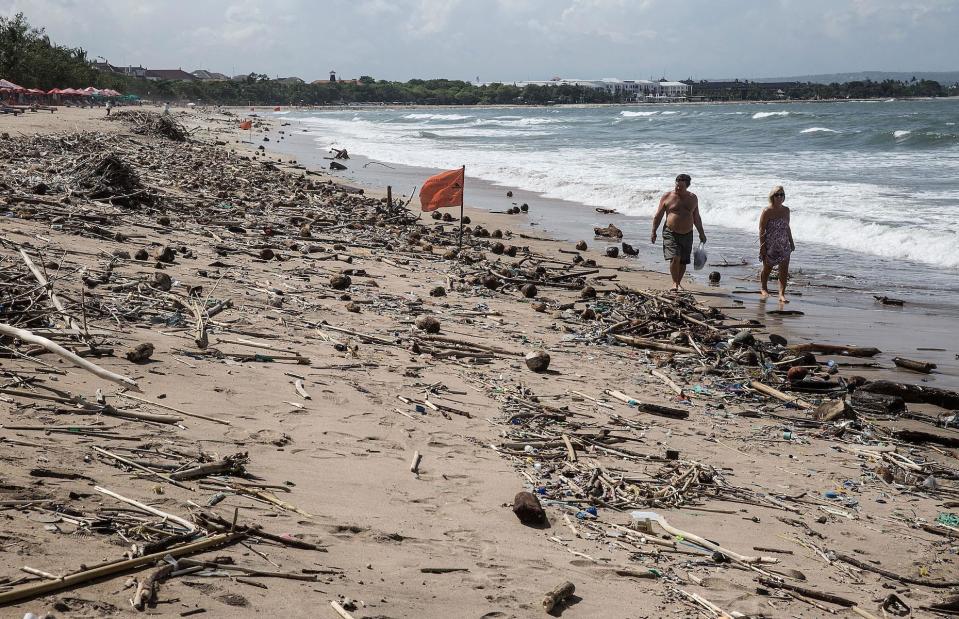
Agung Parameswara/Getty Images
The beaches of island paradise Bali are sadly not as picturesque as the postcards would seem. Rubbish has become a major blight on some of the island’s most popular beaches, such as Kuta Beach (pictured here). It’s particularly bad during the annual monsoon season, when an assortment of debris is swept in by strong winds and currents and strewn across the sands. Swollen rivers wash rubbish from riverbanks to the coastline too.
Bali, Indonesia
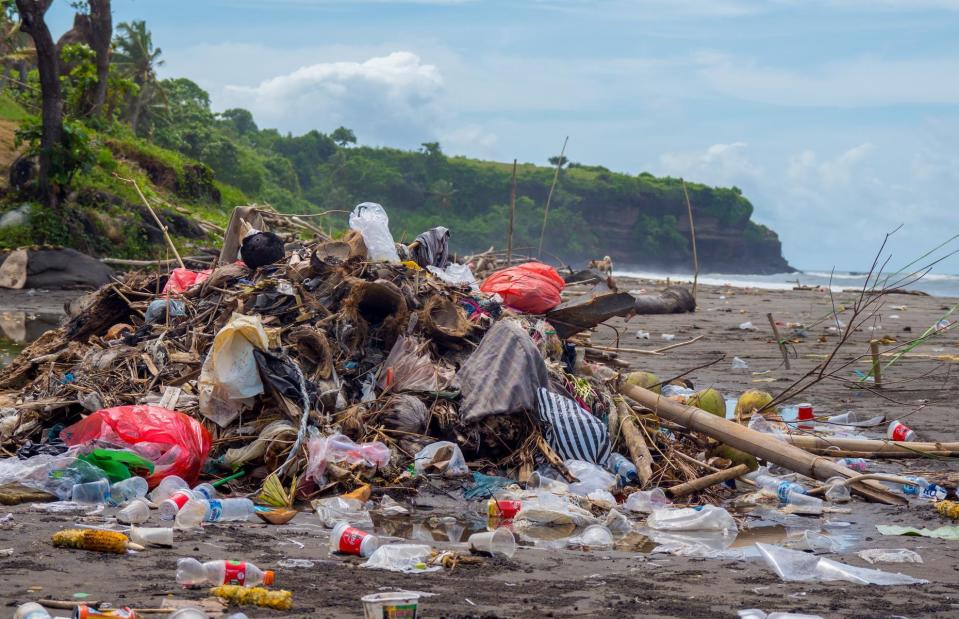
Mike Workman/Shutterstock
The stretch between Kuta and Canggu is one of the Indonesian holiday island's most popular tourist beaches and where some of the worst litter is seen. But the problem also affects beaches elsewhere and in neighbouring Java and Nusa Tenggara, where driftwood and rubbish – including a lot of single-use plastics – turn idyllic sands into eyesores. Bali announced a “garbage emergency” in 2017 due to the vast amounts of rubbish littering its shores and waters.
Bali, Indonesia
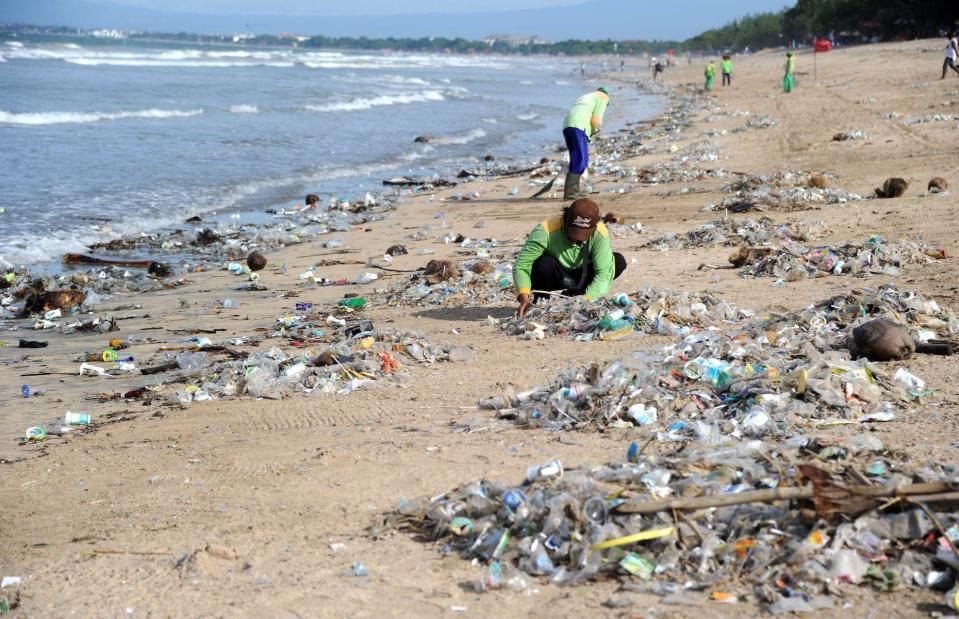
SONNY TUMBELAKA/AFP/Getty Images
The Indonesian archipelago typically releases 201.1 to 552.3 thousand tonnes of plastic into the ocean every year, according to a report published by The World Bank in 2020. Activist group One Island One Voice organises mass voluntary clean-ups of Bali's shoreline; 70,000 people in 560 locations have prevented 203 tonnes of non-organic waste entering the ocean over the past six years. Officials have also introduced bans on single-use plastics, such as straws and plastic bags, to help stem the deluge of waste.
Machu Picchu, Peru
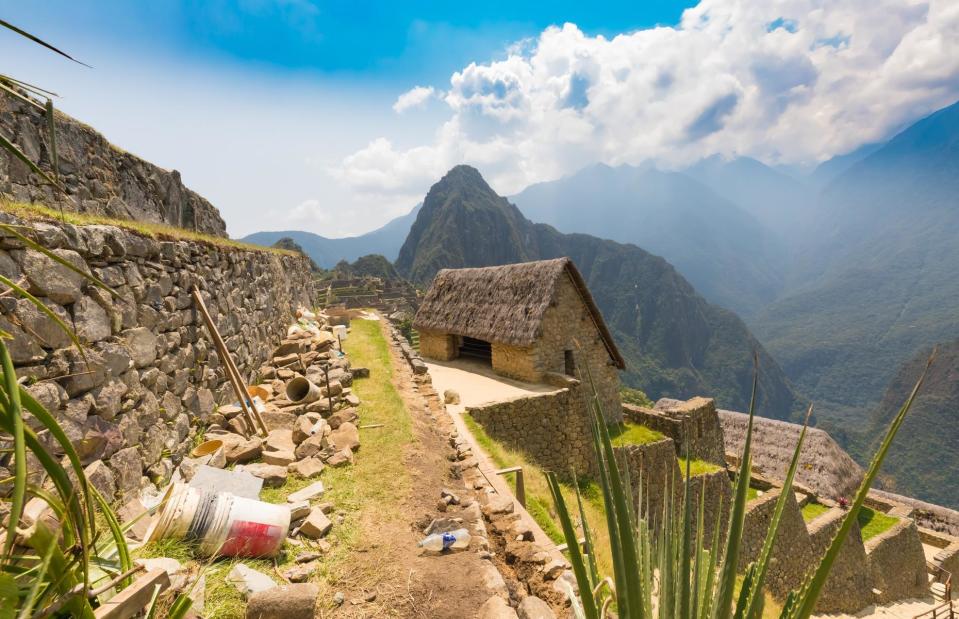
Mark Pitt Images/Shutterstock
Many man-made wonders of the world face being swamped with rubbish too. Ancient citadel Machu Picchu is battling a growing amount of waste as visitor numbers soar. Some tourists trekking to the ruins have reported seeing litter along the Inca Trail, while removing it from the lofty site itself is a mission. The problem has become so bad that UNESCO has threatened to remove Machu Picchu's prestigious status as a World Heritage Site.
Halong Bay, Vietnam
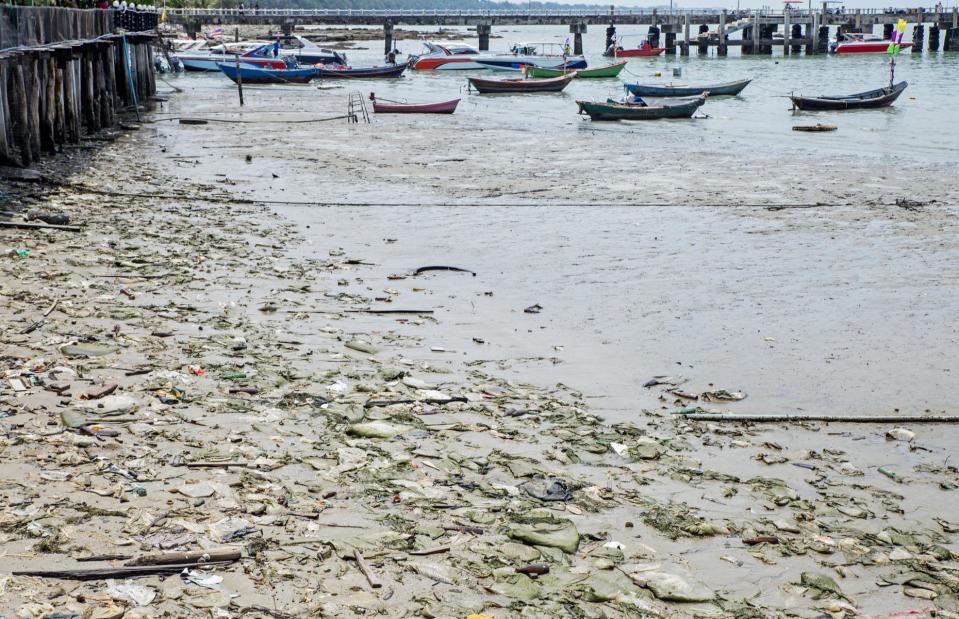
Pcess609/Shutterstock
Unsightly scenes of rubbish floating in the water are sadly how many visitors recall their voyage around Vietnam's Halong Bay, which is normally famed for its emerald waters and towering limestone islands. While Halong Bay is a magical landscape, it faces many environmental challenges as it attracts more and more visitors. A pressing problem is that the UNESCO site is being polluted with litter, waste and discarded fuel from the boats that ferry visitors.
Halong Bay, Vietnam
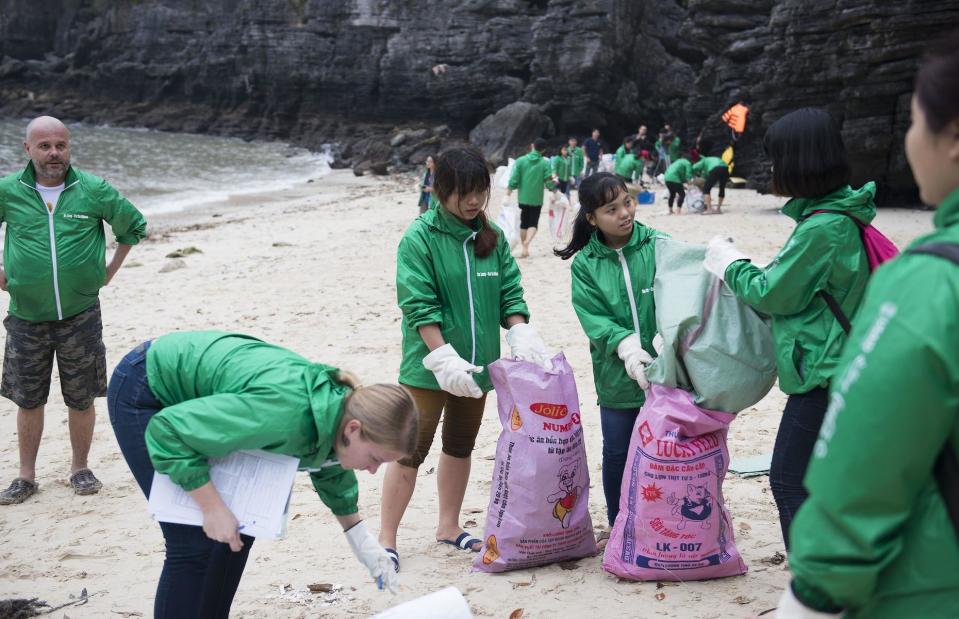
USAID Vietnam/Flickr/United States government work
Styrofoam, plastic wrappers and bottles bobbing around the water and strewn around the bay are depressingly common sights, while forums on TripAdvisor feature discussions from tourists lamenting the amount of rubbish and waste water they've seen polluting Halong Bay. Local community volunteers are trying to tackle the growing rubbish problem to safeguard one of Vietnam’s most valuable and unique destinations – between March and May alone in 2023, 10,000 cubic metres of trash (enough to fill four Olympic swimming pools) was removed from the bay.
Maldives
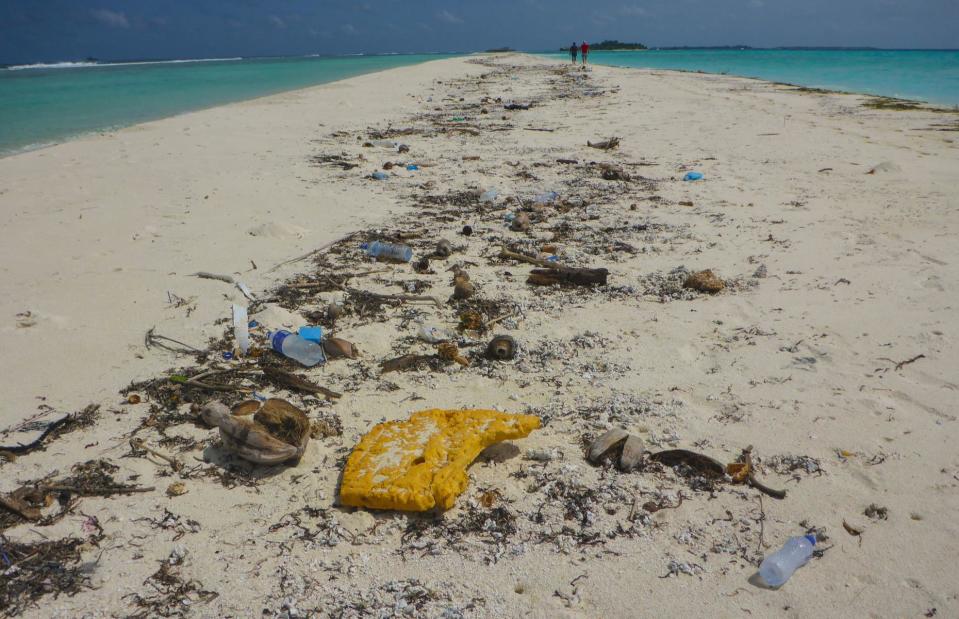
Mouskie/Shutterstock
What's considered one of the world's most pristine paradises is also facing a huge waterborne rubbish problem. Many of the white sand beaches of the Maldives need to be cleaned daily of washed-up rubbish and discarded fishing nets. Overtourism is contributing to the Indian Ocean islands’ influx of plastic waste, which is posing a real and immediate threat to marine animals and their fragile ecosystems as the microplastics are ingested by plankton, fish and other creatures.
Maldives
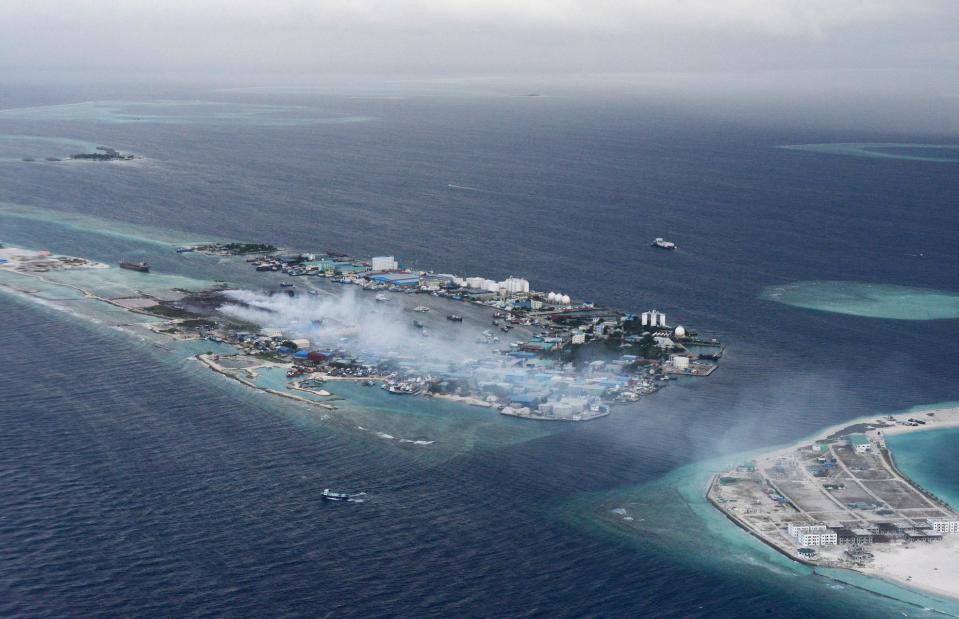
AFP PHOTO/ Roberto SCHMIDT/Getty Images
Waste management has long been a real issue on the low-lying islands, where everything is imported. For some time, the Maldives’ sole waste-processing plant was on a reclaimed island called Thilafushi. Waste from across the islands was taken to the so-called Trash Island, just to the west of the capital, Malé, to be buried, burned or recycled. The facility was so stretched that some illegal dumping of waste directly into the sea occurred, while toxic fumes from the fires resulted in the archipelago banning open trash burning in 2021; and the production and sale of single-use plastics was banned in 2022.
River Thames, UK
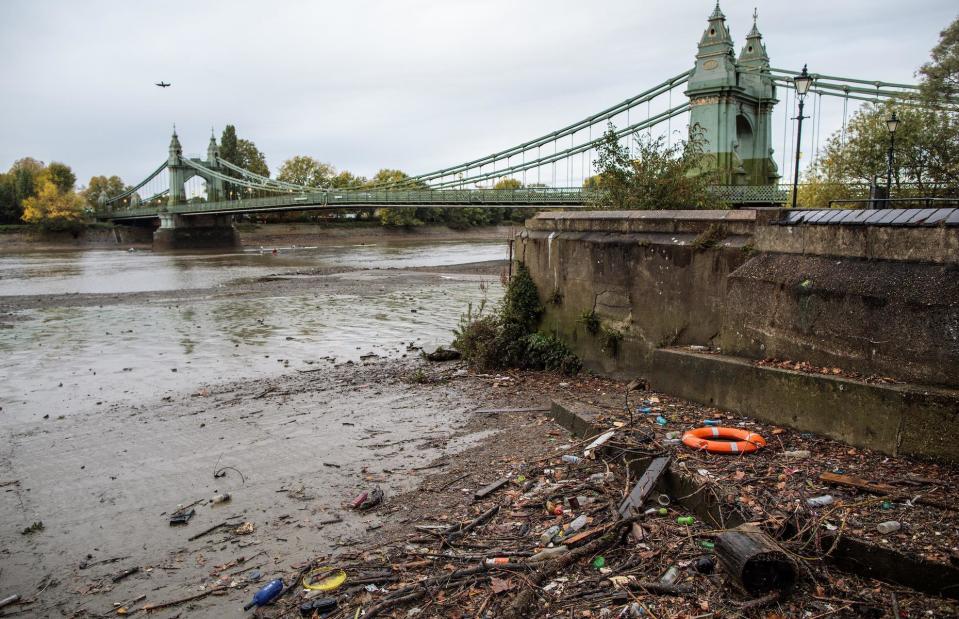
Jack Taylor/Getty Images
Up to 300 tonnes of rubbish is recovered from the Thames every year by the Port of London Authority, with the amount of plastics growing annually. Previous river clean-ups by the Marine Conservation Society and Thames21 have discovered that 60% of litter in the River Thames is made of plastic, with researchers finding that up to 75% of some types of fish had plastic fibres in their gut. Metal cans, food packaging and wet wipes are another nuisance. At one point, the river was so dirty it was deemed "biologically dead".
River Thames, UK
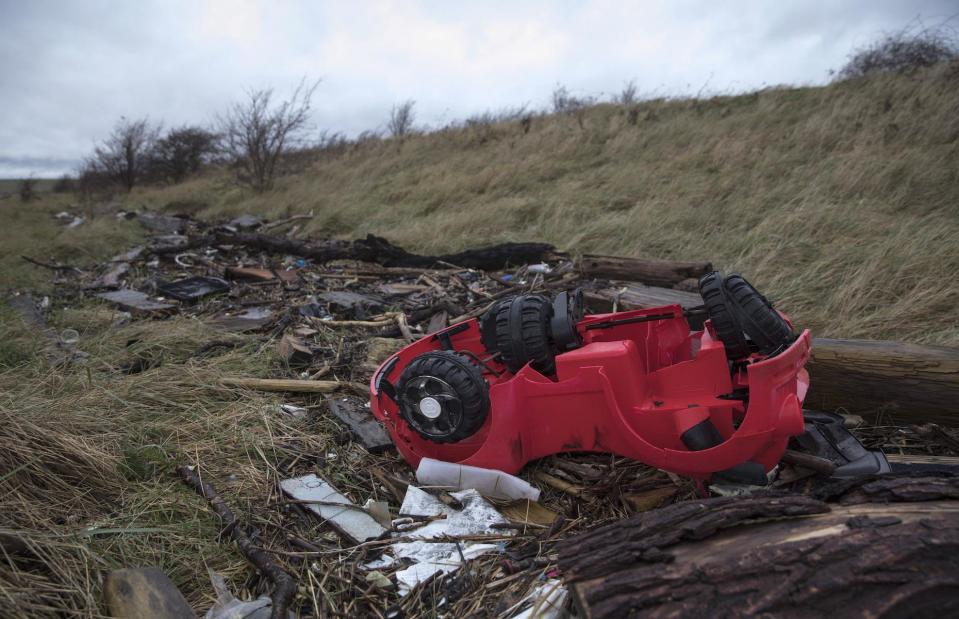
Dan Kitwood/Getty Images
At Southend-on-Sea, where the Thames meets the North Sea, hundreds of items have been known to litter the ground, including unrecognisable pieces of plastic. The Thames Estuary shoreline is an important feeding ground for wading birds and other marine wildlife. Though conditions in the river have largely seen improvements in recent years, pollution from sewage and litter still threatens life in the waterways of the Thames Valley and beyond.
Hawaii, US
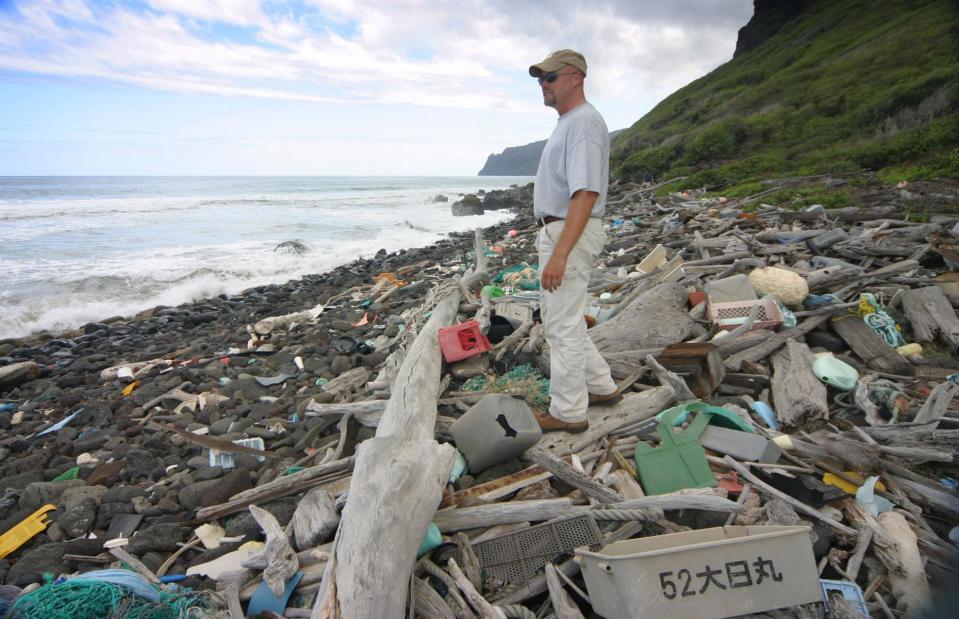
Polihale/Wikimedia Commons/CC BY-SA 3.0
Marine debris has reached critical levels in remote parts of the Pacific, with some of Hawaii's once pristine beaches suffering from a major plastic problem. Many of its beaches and islands, including Niihau (pictured here), are overwhelmed with plastic detritus. Much of the debris is being washed up from a giant convergence of waste, dubbed the Great Pacific Garbage Patch, which is swirling around in the Pacific Ocean between California and Hawaii.
Hawaii, US
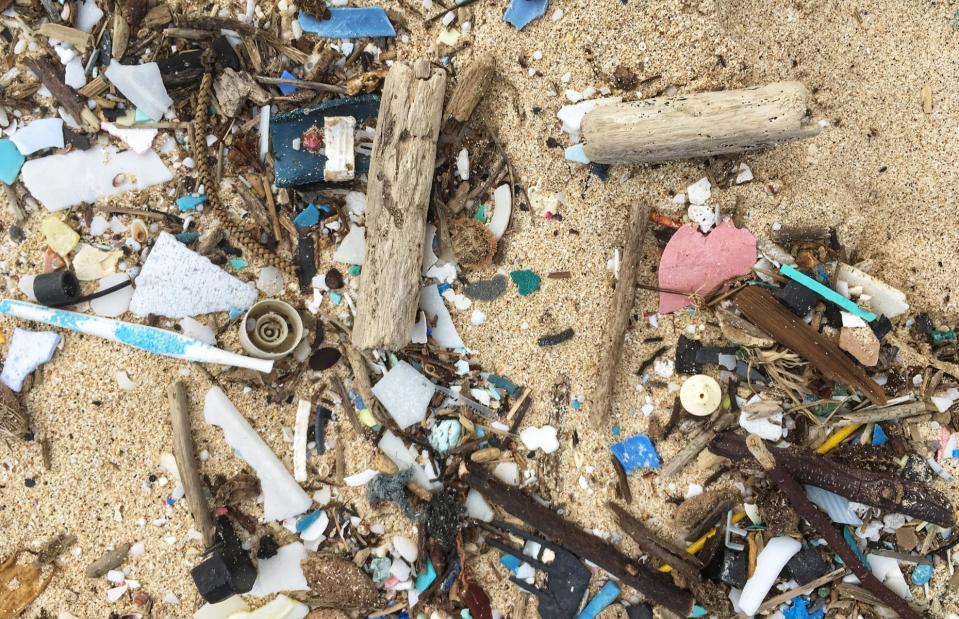
Kara Knight/Shutterstock
Kamilo Point, a far-flung beach in the south of the Big Island, is a particularly notorious stretch of sand where plastic from the Great Pacific Garbage Patch commonly accumulates. Known as Trash Beach, its white sands have become a dumping ground for all manner of junk, including plastics and discarded fishing gear as the Pacific Ocean’s currents and powerful winds dump man-made rubbish ashore by the truckload.
Hawaii, US
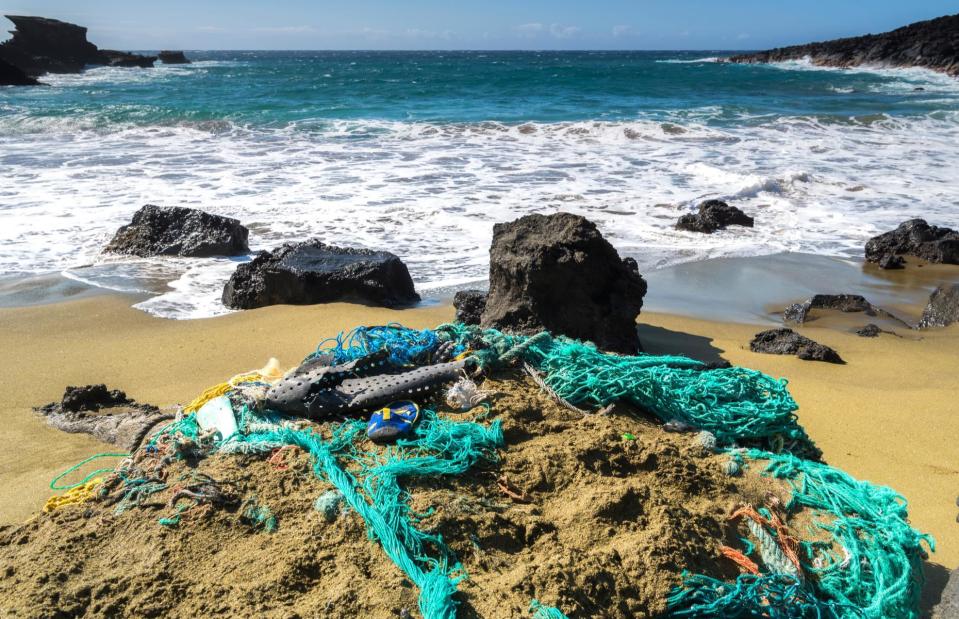
RugliG/Shutterstock
In February 2023, scientists revealed that a sperm whale found dead off the coast of the island of Kauai was mostly killed by plastic pollution – its intestinal tract was full of fishing traps, discarded nets, plastic bags and other waste. Work is being done to try and clean up Hawaii's waters: according to the Hawai'i Wildlife Fund, the Hawaiʻi Nei Marine Debris Removal Project has removed 167,554 kilos (369,393 lbs) from four different Hawaiian islands over the past two years.
Barcelona, Spain
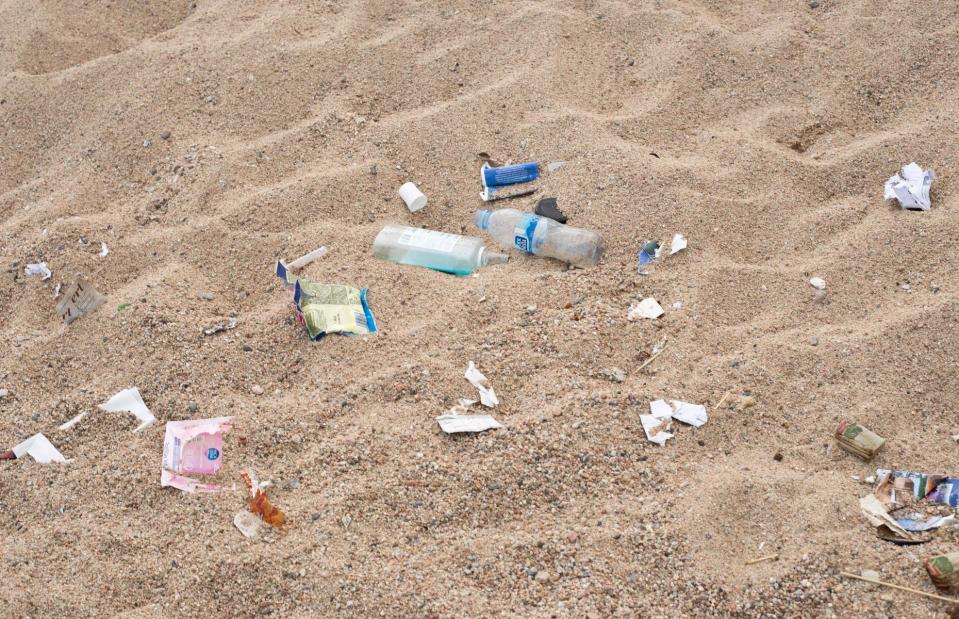
Patricia Chumillas/Shutterstock
As tourism overwhelms the city of Barcelona, its beaches have borne the brunt, with many partygoers and visitors leaving more than a footprint in the sand. Cigarette butts, plastic glasses, bottles and food containers can be seen littering the sands of beaches including Barceloneta after the pleasure-seeking crowds have dispersed.
Barcelona, Spain
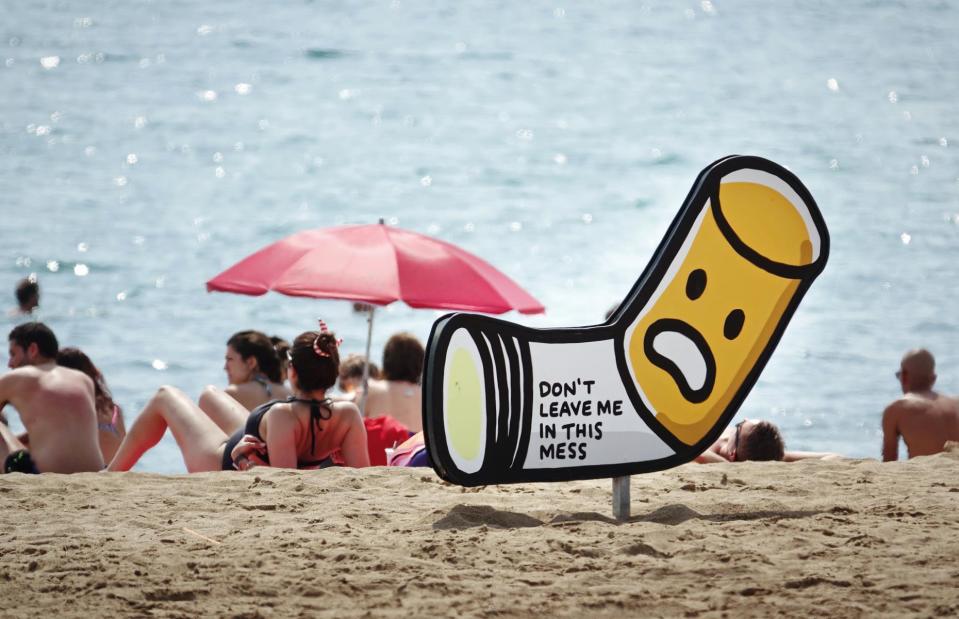
MikeDotta/Shutterstock
However, the city does not take littering lying down. Hefty fines are dispensed to offenders and rubbish lorries regularly plough the sand to collect rubbish. In 2022, the city signed an official commitment to become zero waste, with objectives for the coming years including reducing municipal solid waste and 427kg (941lbs) of waste generation per capita per year by 2027.
Phuket, Thailand
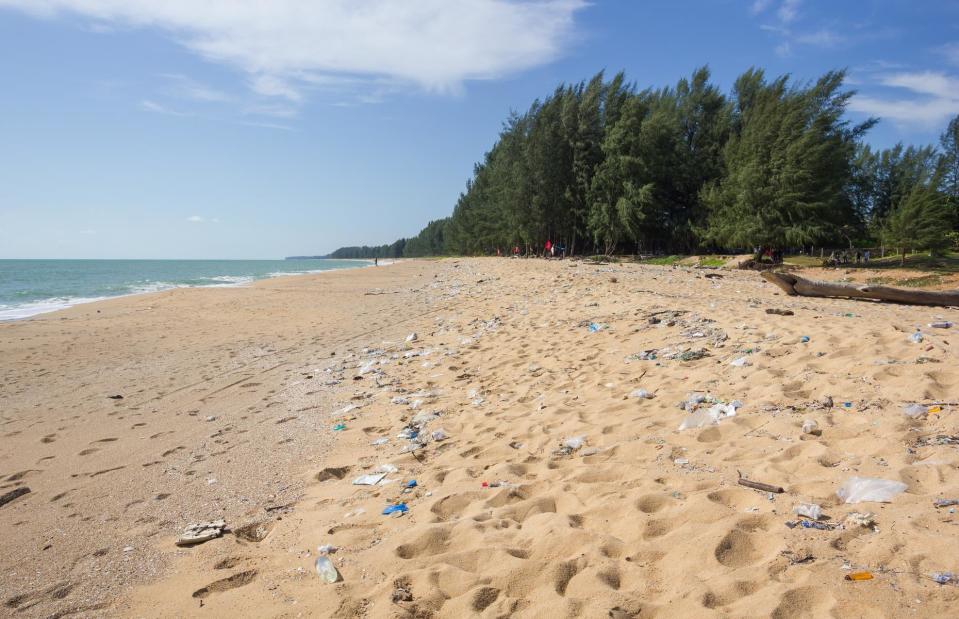
TS Photographer/Shutterstock
Waste is something that has been tarnishing Thailand’s beguiling islands for many years now. The island of Phuket, pictured, is one tourist hotspot where beaches are scattered with garbage and the water quality is dubious at best. The rising levels of rubbish, escalated by excessive tourism and poor waste management, are causing serious ecological challenges across the country. Thailand is among the world's worst offenders when it comes to plastic pollution and the effects are visible on Phuket. Though 2023 has seen considerable beach-cleaning efforts on the island, monsoon season washed up unwelcome oil and tar deposits on its northern shores.
Koh Lanta, Thailand
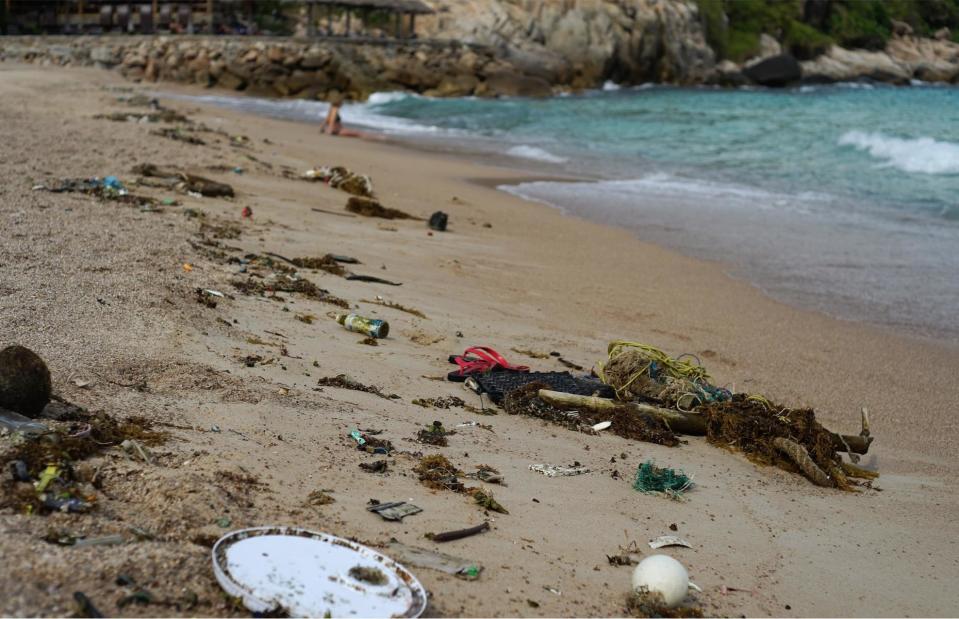
Sergej Uhrich/Shutterstock
While it's no surprise that party islands Phuket and Koh Samui suffer from a litter problem, it's more shocking to see that relatively sleepy and remote Koh Lanta does too. According to the Ocean Conservancy, Thailand produces up to 27.8 million tonnes of waste a year, with most marine waste made up of plastic debris (12%); Styrofoam boxes (10%); food wrappers and plastic bags (8%); glass and plastic bottles (7%); and straws (5%). Moves have been made to clean up popular beaches, with cigarettes banned and plastic bags and Styrofoam containers prohibited in national marine parks.
Rome, Italy
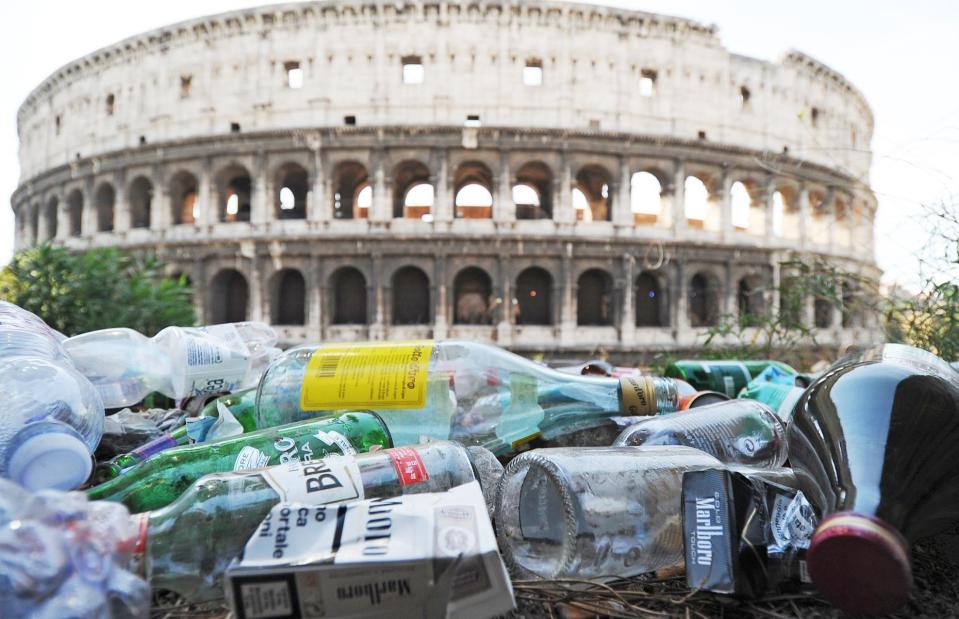
MZeta/Shutterstock
An ongoing garbage collection crisis, which has previously included a strike by rubbish collectors and a fire at a waste plant, has seen parts of the Eternal City laid to waste. Overflowing communal bins and uncollected junk covering pavements and marketplaces have become an all-too-common sight in what is one of Europe’s most beautiful and populous cities; the stench of hot rubbish a lingering reminder of visits to the increasingly shabby city of Rome.
Rome, Italy
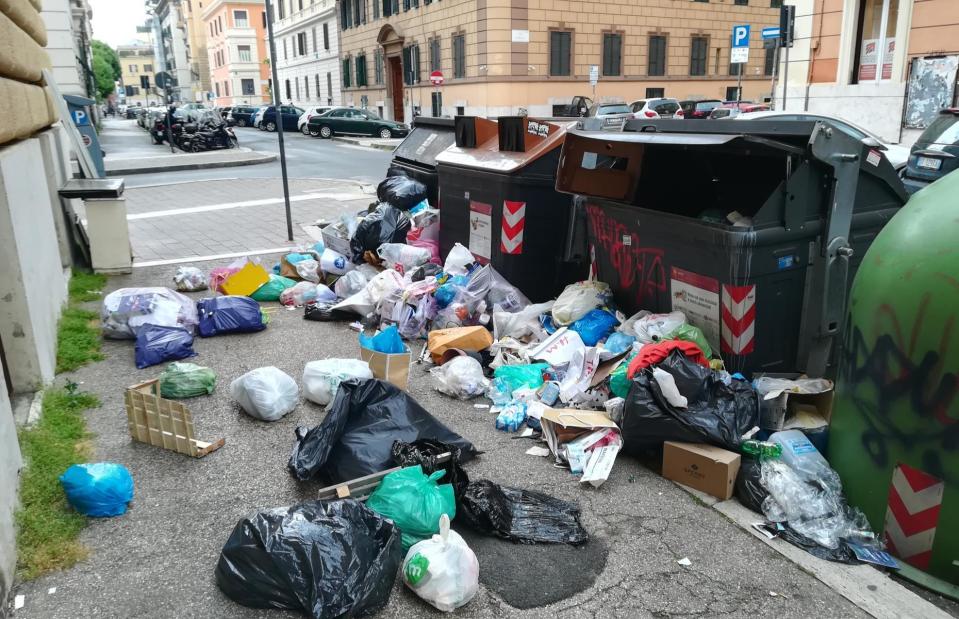
Kraft74/Shutterstock
Thanks to poorly organised rubbish collections, the sight of wild boars foraging through sacks of rubbish in streets and enormous seagulls attacking bins in Rome became a familiar sight in 2022, and citizen groups took matters into their own hands by organising voluntary clean-ups around the ancient metropolis. While the mayor had promised to clean up the city by December 2022, protests about unacceptable living conditions continued. Then, in April 2023, it was announced that Rome would start sending 900 tonnes of rubbish to Amsterdam every week, in order to keep on top of disposal.
Boracay Island, the Philippines
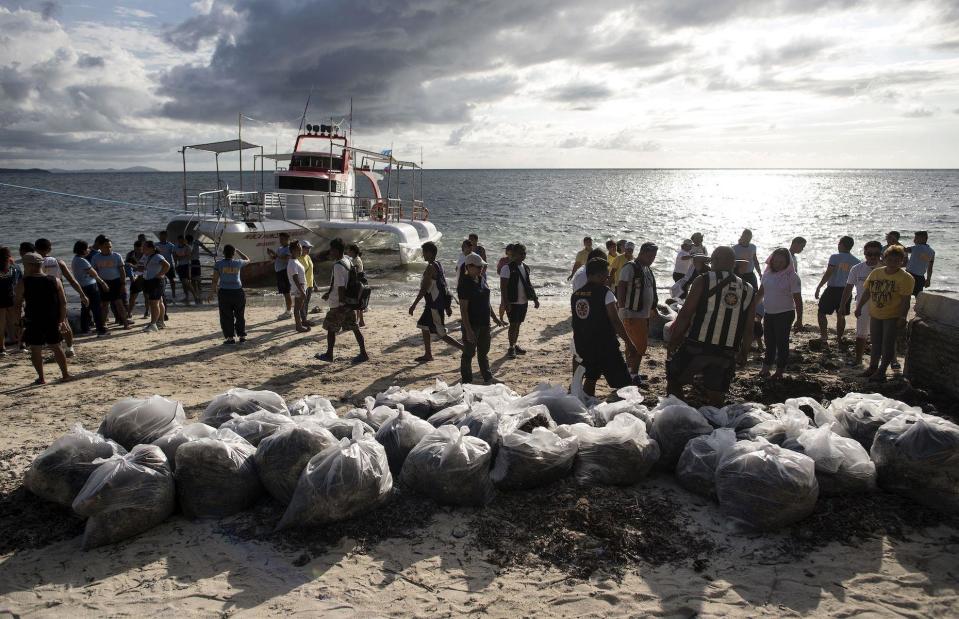
NOEL CELIS/AFP/Getty Images
In 2018, beach resort Boracay Island became a poster child for the ugly face of over-development when the Philippines' president Rodrigo Duterte announced its closure and called it a “cesspool”. His comment referred to the raw sewage that was videoed flowing directly into the tiny isle’s famed blue waters from hotels and restaurants. The scale of rubbish was another huge issue, with the amount generated per person more than three times higher than in the capital, Manila.
Boracay Island, the Philippines
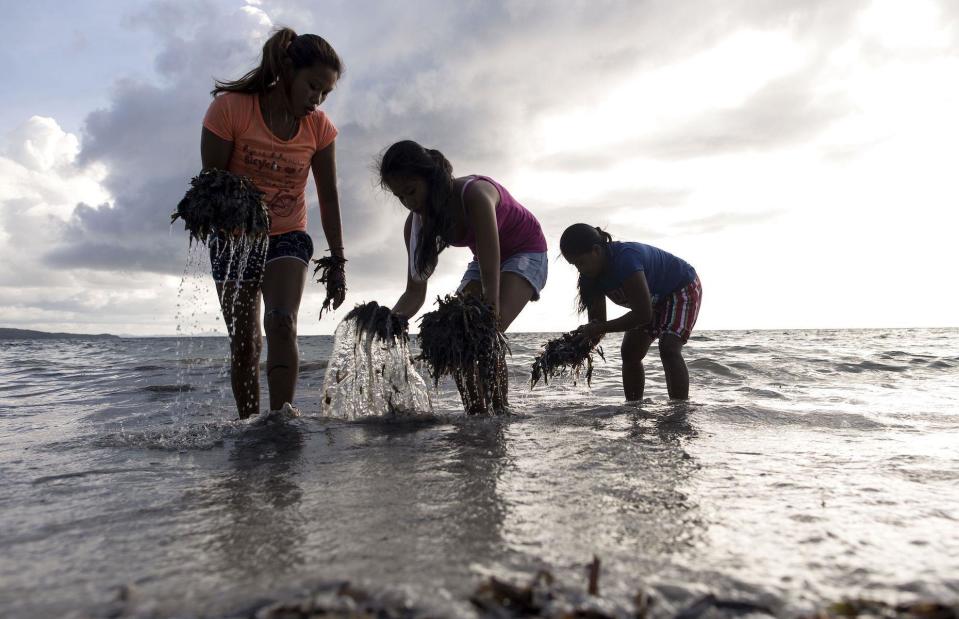
NOEL CELIS/AFP/Getty Images
At peak times there would be 40,000 visitors on the popular beach resort, leaving behind mountains of rubbish. After being closed for six months to allow for large-scale rubbish clear-ups and sewage system upgrades, the island reopened in 2018 with caps on tourist numbers (only 19,215 tourists at a time). However, in a bid to boost tourism following the global pandemic, it seems this rule hasn't been strictly followed.
Lake Titicaca, Bolivia and Peru
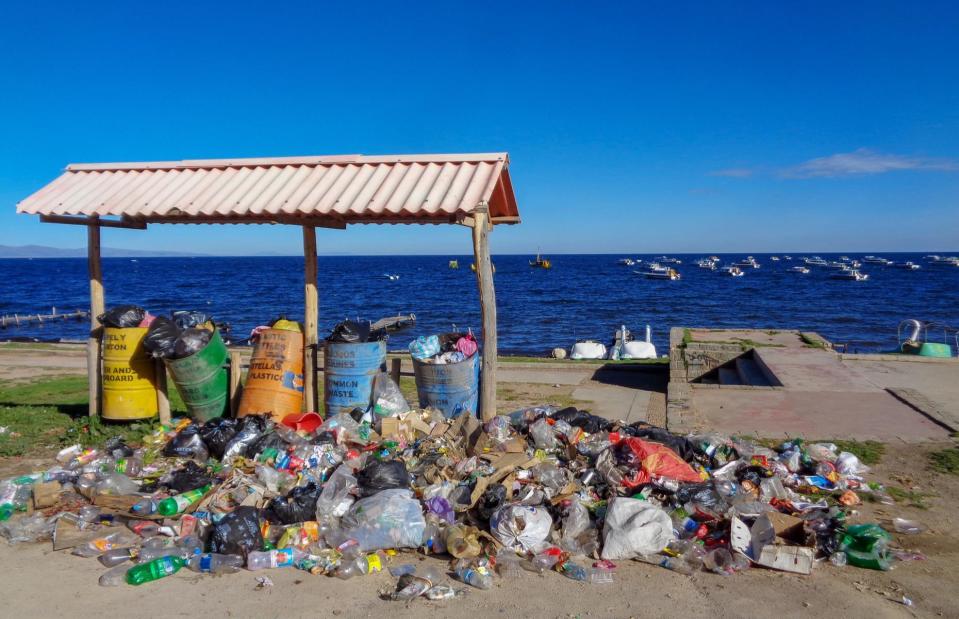
Todd Powell/Shutterstock
The sight of litter lying along the shores of the sacred Lake Titicaca, the highest lake in the world, is a very sorry one. It’s just one of the problems affecting the ancient lake, whose waters were thought by the Incas to be the birthplace of the sun and now have dangerously high levels of pollution. Industrial and household waste, plastics and other rubbish are washed into the lake, polluting its water and poisoning its aquatic animals. Rubbish deposited on its islands is ingested by livestock and the pollution is causing health problems among the people living along its shores.
Agra, India
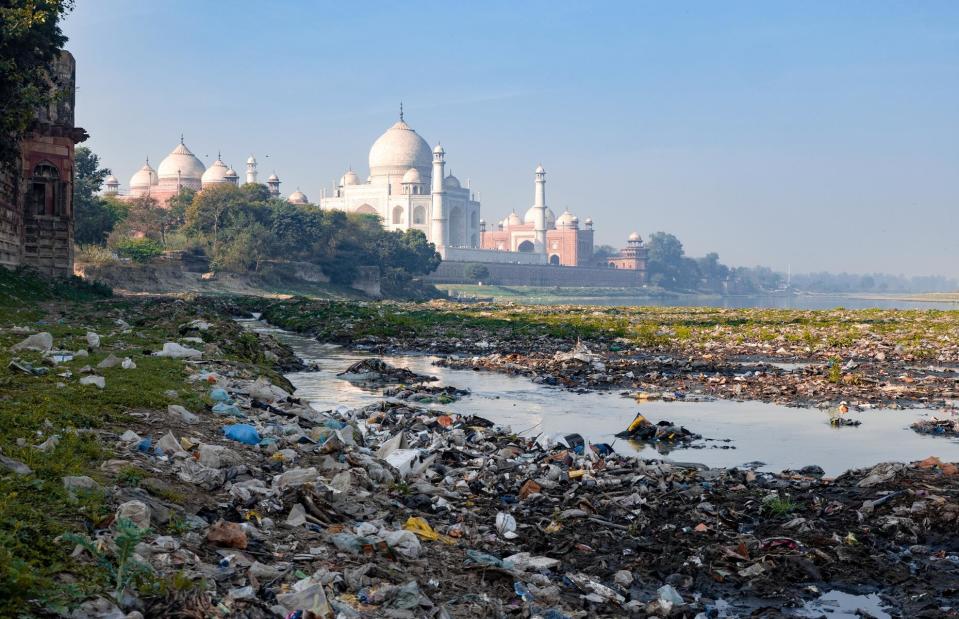
ModernNomads/Shutterstock
This sight of the Taj Mahal reflected in the rubbish-strewn Yamuna river is not what most sightseers bargain for. One of India's most sacred rivers, which flows past the country’s most famous building, has long suffered from severe pollution. Waste is a serious issue across the country, with many of its rivers and waterways choked with bottles, bags and plastic packaging, while streets are lined with bags of rubbish. Conditions in the Yamuna were so bad in 2021 that the river developed a toxic white foam on its surface, caused by a noxious combination of sewage and industrial waste.
Mumbai, India
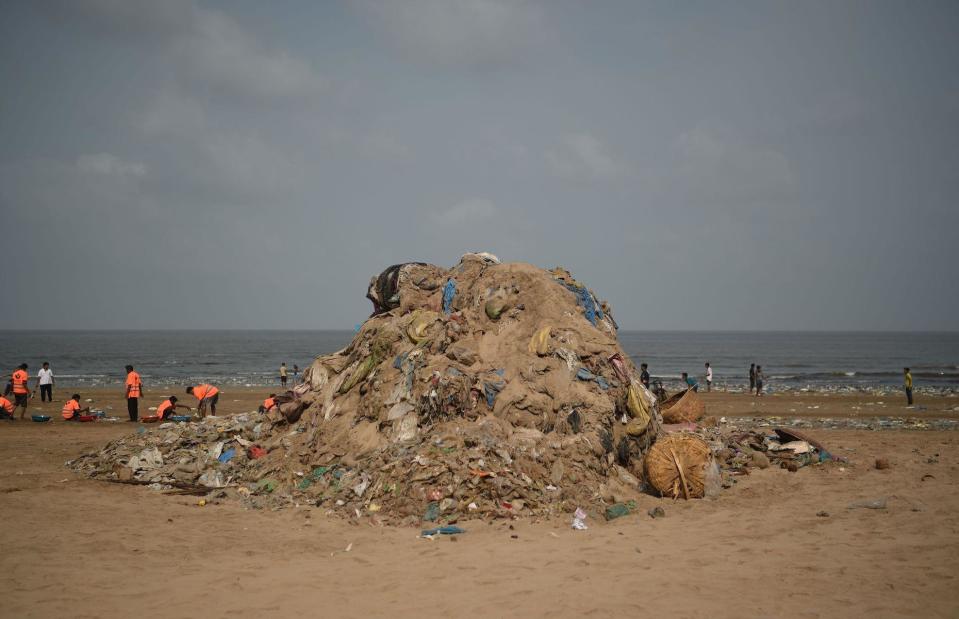
PUNIT PARANJPE/AFP/Getty Images
Another Indian city battling a seemingly losing fight against the rising tides of refuse is Mumbai, where volunteers have been waging war on detritus on the city beaches for several years. It’s not just the day-to-day rubbish that gets left behind by beachgoers, but tonnes of rubbish is continually washed up from the sea. Versova and Juhu beach are some of the dirtiest spots, with plenty of unsanitary sights and scents scarring its sands.
Mumbai, India
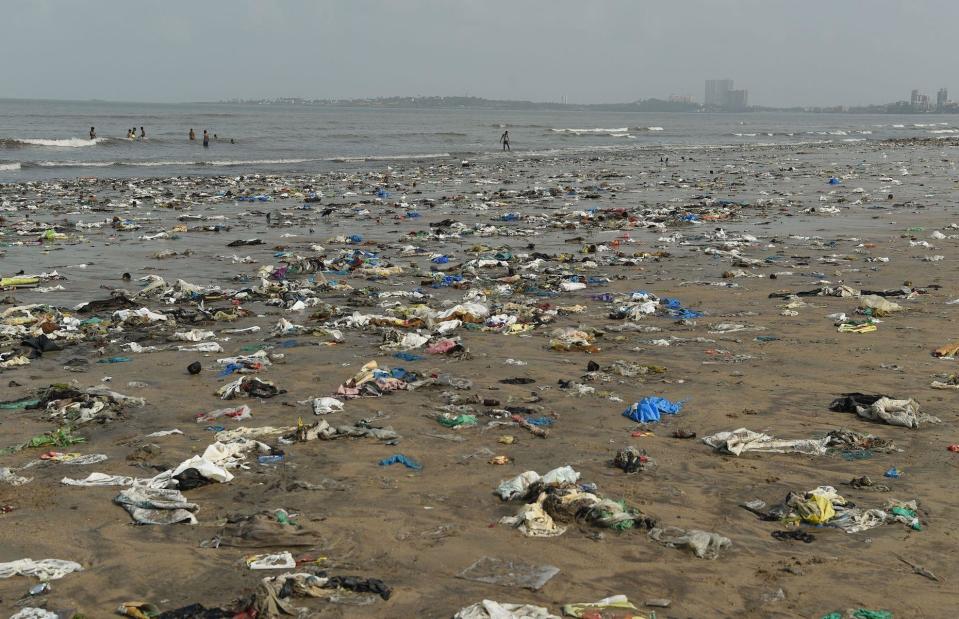
PUNIT PARANJPE/AFP/Getty Images
The deluge of rubbish that washes out from Mumbai's streets and slums ends up in the Arabian Sea before huge masses of it are deposited back on its beaches. The unpleasant problem is exacerbated during the heavy rainfall of the monsoon season, when truckloads of rubbish are cleared from the beaches every day.
Lebanon
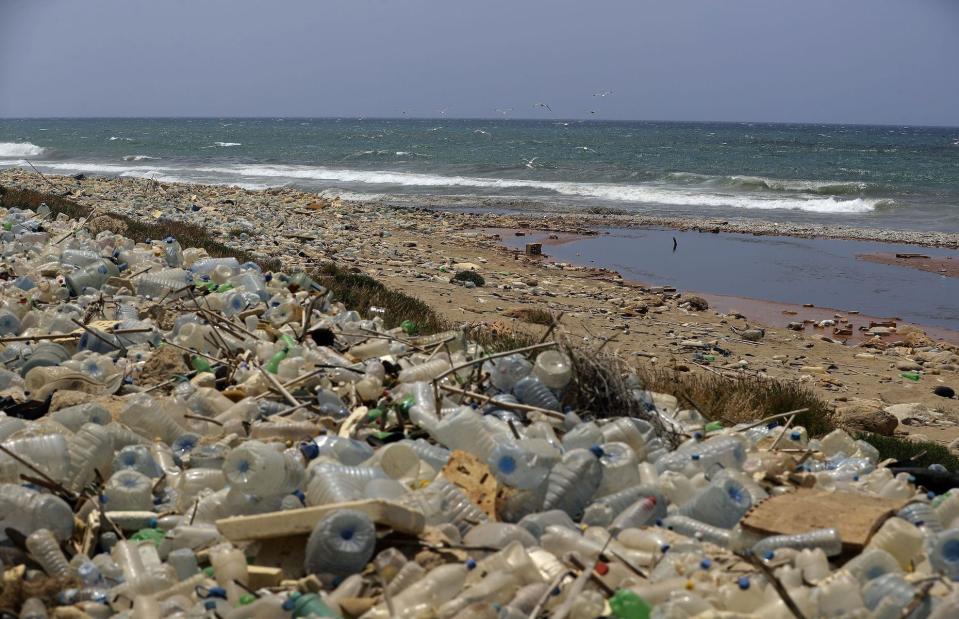
JOSEPH EID/AFP/Getty Images
Another nation fighting a never-ending battle with garbage on its shoreline is Lebanon. According to news agency Xinhua, the country produces over two million tonnes of rubbish per year, with 94% sent to landfill sites and just 6% recycled. In previous years, winter storms brought the issue to public attention as masses of rubbish littered its lovely Mediterranean coast and its seas were seen awash with garbage. Meanwhile, snowstorms in 2022 forced many to burn waste, plastic or even their own clothes to stay warm.
Lebanon
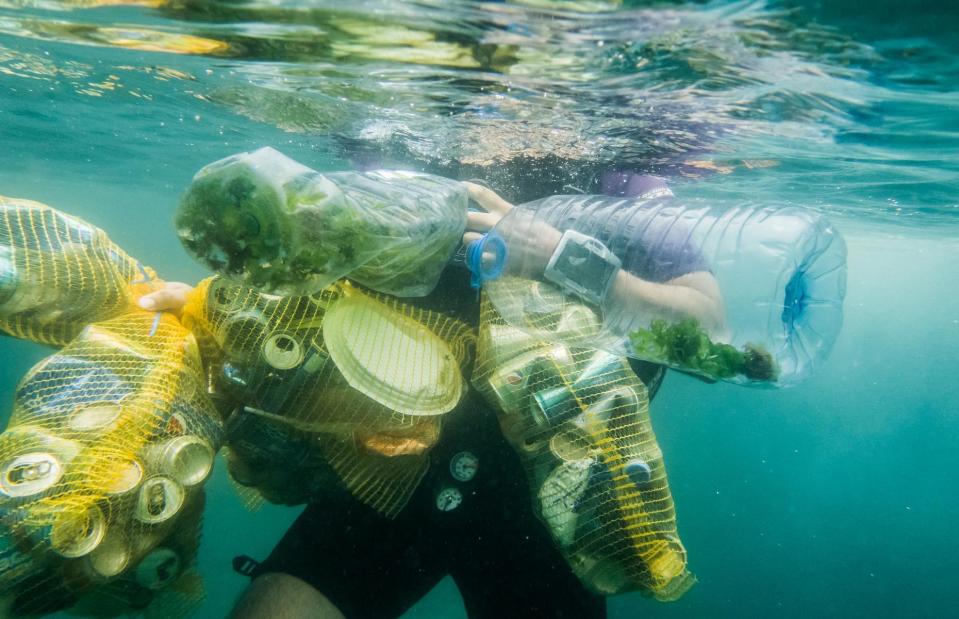
SOPA Images/SIPA USA/PA Images
Rotting waste at the Costa Brava landfill site has continued to attract hosts of seagulls, which has caused its own implications at nearby Beirut–Rafic Hariri International Airport. Regular beach clean-ups have been organised by environmental groups for years but a huge nationwide clean-up operation was undertaken in Lebanon in 2019 to remove vast piles of rubbish – much of it plastic. Volunteers cleared masses of rubbish from more than 150 locations, including its beaches and waters. Pictured here is a diver retrieving rubbish from the Corniche promenade in Beirut.
Honduras, the Caribbean
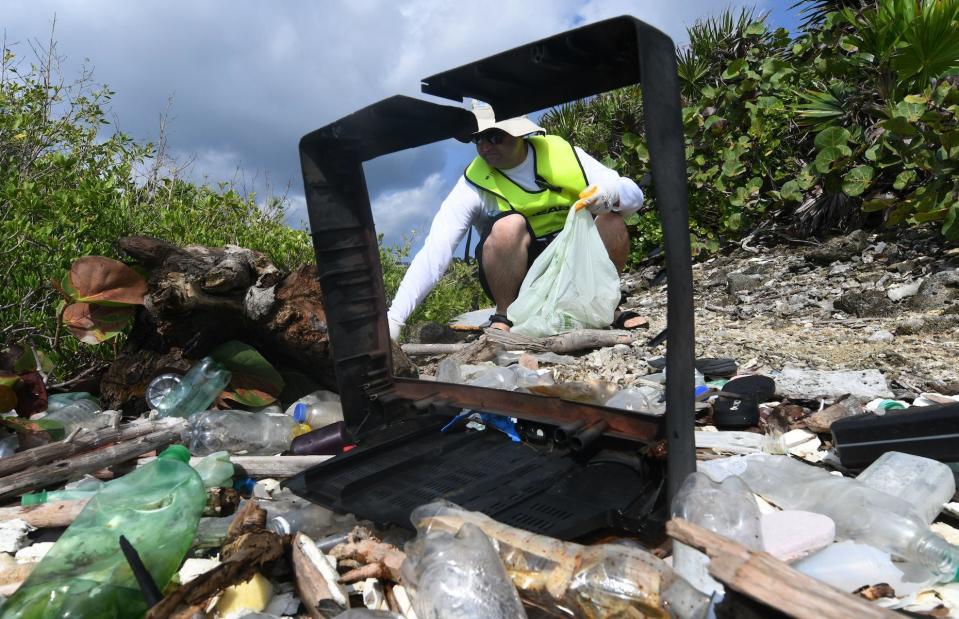
RLANDO SIERRA/AFP/Getty Image
Another sea mired with floating masses of marine litter is the Caribbean Sea. Beaches in Honduras and on Panama’s San Blas Islands, among others, are being choked by a mass of plastic bottles, wrappers and other detritus as they wash ashore. Plastic waste floating off the coast of Roatán, an island in Honduras (pictured) renowned for its beautiful beaches, is thought to have been washed into the sea from Guatemala.
Dominican Republic, the Caribbean
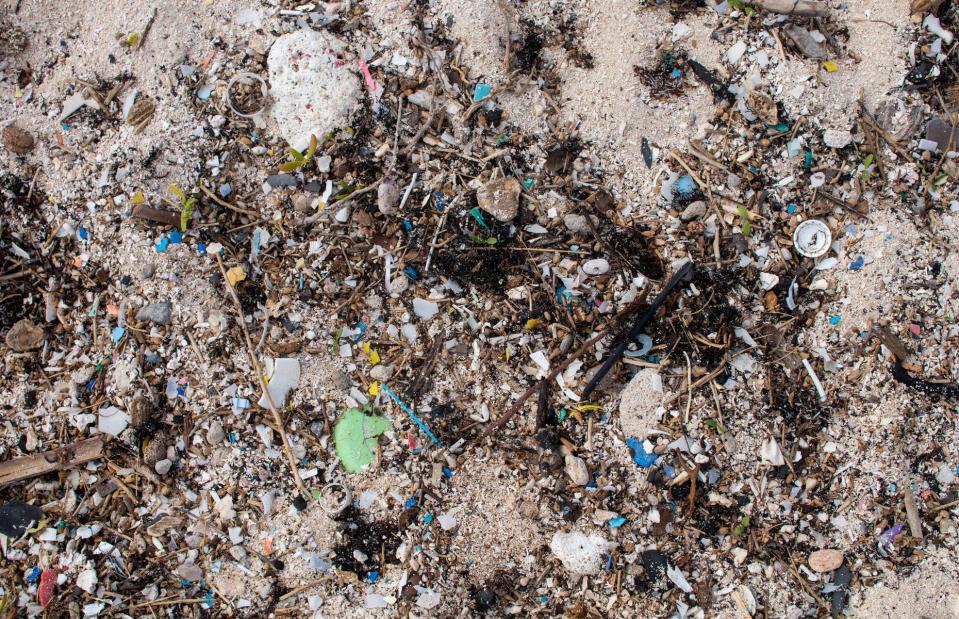
Paolo De Gasperis/Shutterstock
The vast sea of pollution and plastic bobbing about in the Caribbean has affected the Dominican Republic too, with a surge in microplastics polluting its beaches and waters. These tiny pieces of plastic have a devastating effect on the coral reefs and marine life that ingest them. In September 2022, there was a massive clear-up operation on the beautiful island with environmental organisations, private companies and public institutions trying to clean the beaches.
Mallorca, Spain
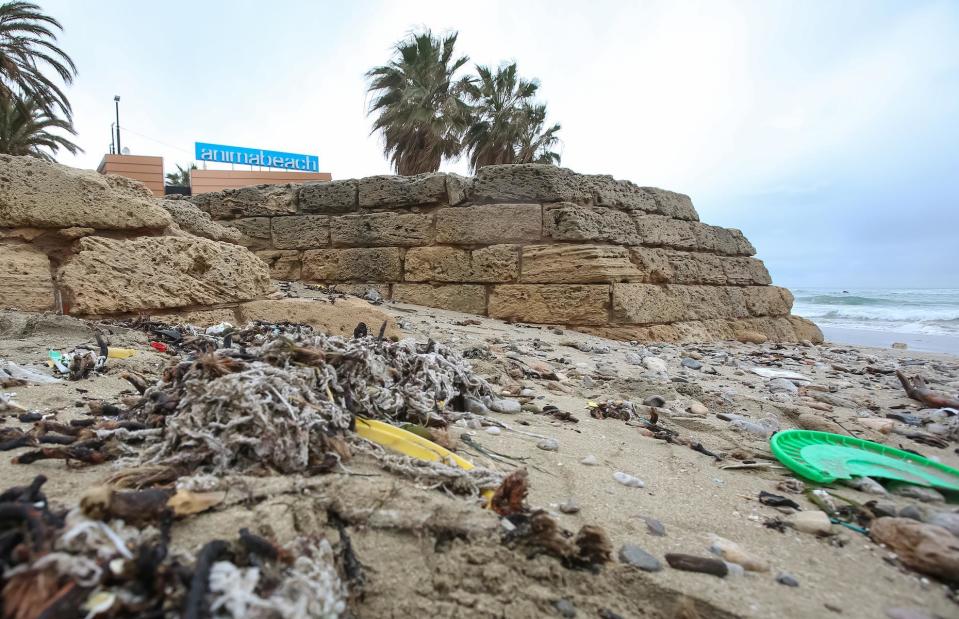
Bodo Marks/DPA/PA Images
Mass tourism and poor infrastructure are some of the reasons why the Mediterranean island of Mallorca can be plagued by rubbish problems. In recent years, this bay near Palma has become an unsightly mass of rubbish and sewage during periods of heavy rainfall. Thoughtless tourists have been blamed for regularly littering Playa de Palma, a gorgeous but busy stretch of sand, with their beer bottles, food wrappers and cigarette butts.
Now check out these shocking photos that show the true impact of climate change on our world


